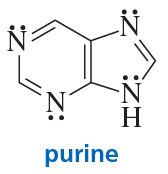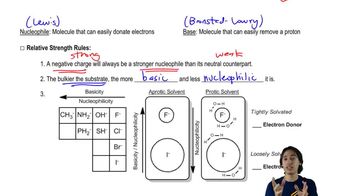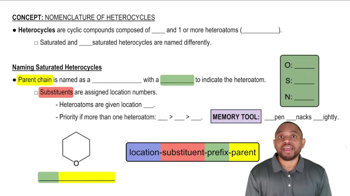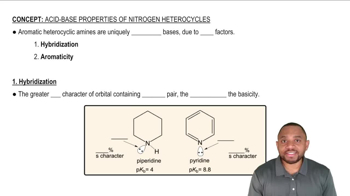Here are the essential concepts you must grasp in order to answer the question correctly.
Protonation and Basicity
Protonation refers to the addition of a proton (H+) to a molecule, which often occurs at basic sites. In heterocyclic compounds like purines, the basicity of nitrogen atoms varies due to their electronic environment. The nitrogen atom that can best stabilize the positive charge after protonation is considered the most basic and thus the most likely to be protonated.
Recommended video:
Understanding the difference between basicity and nucleophilicity.
Heterocyclic Compounds
Heterocyclic compounds are cyclic structures that contain atoms of at least two different elements in their rings, commonly carbon and nitrogen. In purines, the presence of multiple nitrogen atoms influences their chemical properties, including acidity and basicity. Understanding the structure of these compounds is crucial for predicting their reactivity and interactions.
Recommended video:
Nomenclature of Heterocycles Concept 1
Acidity and Basicity of Nitrogen Atoms
The acidity and basicity of nitrogen atoms in a heterocyclic compound depend on their hybridization and the presence of electron-withdrawing or electron-donating groups. In the context of purines, the nitrogen atoms can exhibit different levels of acidity and basicity, affecting their likelihood of being protonated. This concept is essential for determining which nitrogen is most or least likely to accept a proton.
Recommended video:
Acid-Base Properties of Nitrogen Heterocycles Concept 1

 Verified step by step guidance
Verified step by step guidance Verified video answer for a similar problem:
Verified video answer for a similar problem:



 3:15m
3:15m